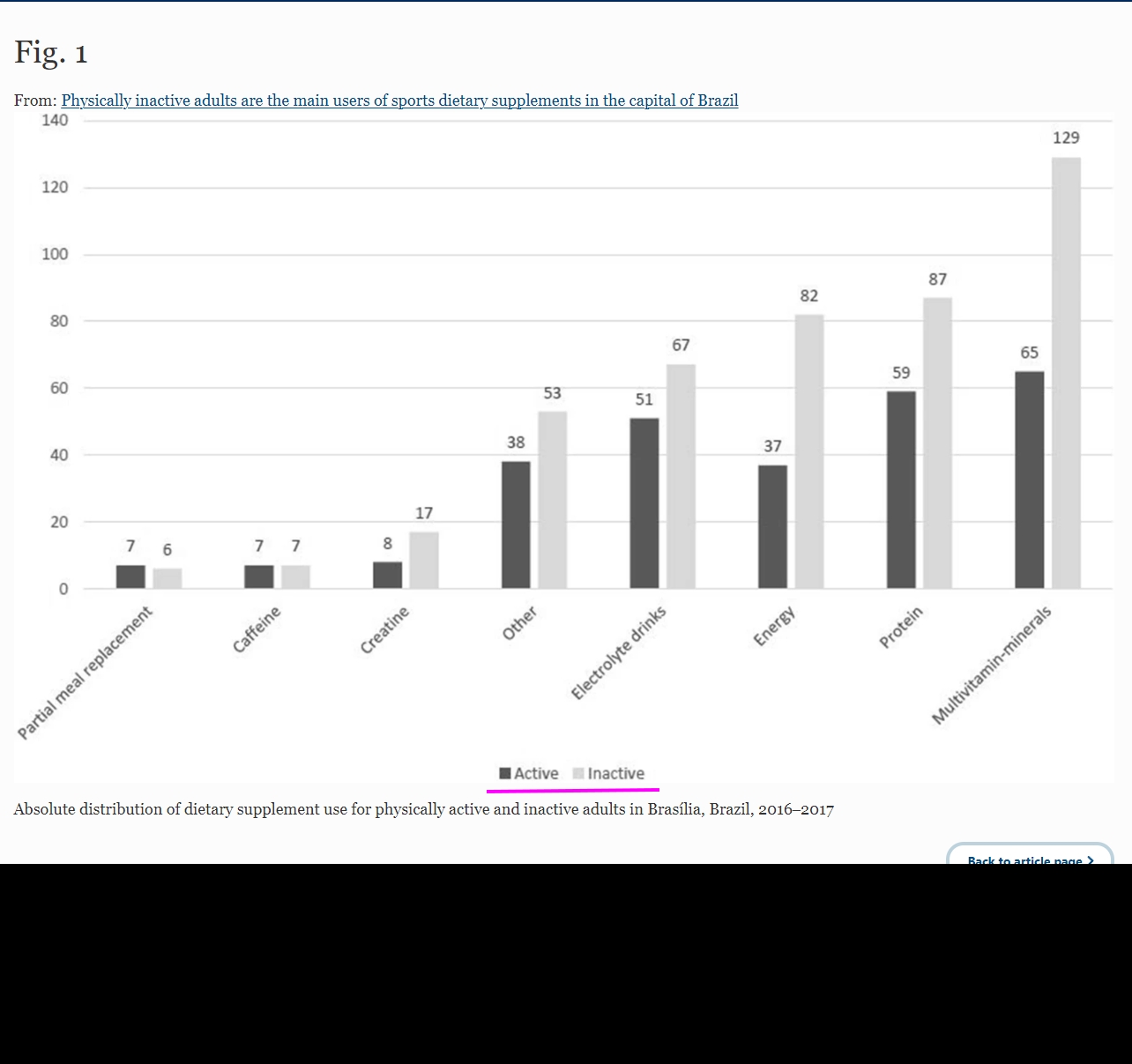Physically inactive adults are the main users of sports dietary supplements in the capital of Brazil
Lara Pereira Saraiva Leão Borges, European Journal of Nutrition volume 61, pages2321–2330 (2022)
Purpose
This cross-sectional study aimed to provide estimates of dietary supplements (DS) use and to examine the relationship between sports dietary supplements (SDS) use and sociodemographic and lifestyle characteristic, body mass index and total daily physical activity (PA) in the adult population of Brasília, Brazil.
Methods
DS use was collected from 506 adults via a Food Frequency Questionnaire. DS were divided into multivitamin-minerals, electrolyte drinks, energy, protein, partial meal replacements, creatine, caffeine, and others. Electrolyte drinks, energy, and protein supplements were considered as SDS. PA was estimated from a 24-h PA recall, and total MET (metabolic equivalents)/day and MET-h/day were calculated. Participants were categorized as physically inactive or active according to MET-h/day.
Results
DS were used by 68% of adults; multivitamin-minerals (38%) and protein supplements (29%) were the most commonly used products. SDS use was associated with the highest socioeconomic level, younger age, and male gender, but not with PA. Also, most SDS users were physically inactive.
Conclusion
These findings indicate that SDS may be used unnecessarily by adults in Brasília. Specific recommendations and control procedures for the use of SDS are warranted.














